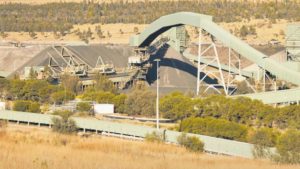
The Mount Arthur coal mine is owned by New South Wales Energy Coal. (Photo: BHP)
After failing to get a viable offer, BHP has decided to retain New South Wales Energy Coal (NSWEC) in its portfolio. It will seek the relevant approvals to continue mining beyond its current mining consent that expires in 2026 and proceed with a managed process to cease mining at the asset by the end of the 2030 financial year. The decision follows BHP’s review of its lower grade metallurgical and energy coal assets that was announced in August 2020 and resulted in the divestment of interests in Cerrejón and BHP Mitsui Coal (BMC) in January and May, respectively.
A trade sale process for NSWEC was conducted, but the process did not result in a viable offer. Assessment of the resource economics, geotechnical profile and future investment requirements determined that continued mining in the near term and moving to a closure in 2030 provides the optimal financial outcome when compared to alternate options.
Continuation of mining to the end of fiscal year 2030 will afford eight years to work with people, state and federal governments and local communities in the Hunter Valley region on a transition approach that supports long-term community sustainability, BHP said.
Plans to continue operating NSWEC until 2030 are subject to obtaining relevant approvals to enable mining beyond the current consent, which only provides approval for mining until 2026.
Work is under way to prepare the application for the relevant approvals with the New South Wales and Australian governments to support mining until 2030. This will also include plans for closure of the asset, including rehabilitation and determining the most appropriate post-mining land use. It is expected that continued work on rehabilitation will take 10 to 15 years following the cessation of mining. The provision for closure of the mine as of December 31, 2021, was approximately US$700 million.
NSWEC Vice President Adam Lancey said, “We will work with our people, local business partners, traditional owners, and local and state governments to operate safely and productively, prepare for closure and sustainable rehabilitation of the site, and ensure the pathway to closure is managed in a way that meets community and regulatory expectations.”




